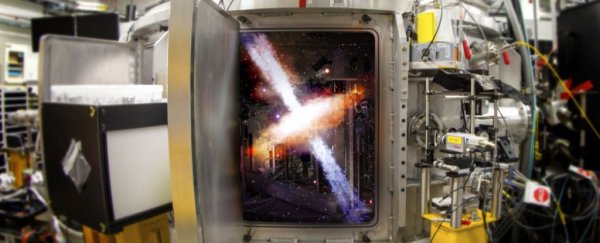With significant advancements in its technology, the Department of Energy's SLAC National Accelerator Laboratory is capable of recreating some of the universe's most violent cosmic events, events which can prove (or disprove) theories and predictions about our cosmos and how the most extreme space phenomena affect different objects.
Indeed, the organisation has successfully achieved a number of cosmic events on a small scale in their laboratories.
Seigfrid Glenzer, head of SLAC's High Energy Density Science Division, and his team successfully turned graphite into lonsdaleite. While graphite can be turned into a diamond under high pressure, scientists predicted that, when a meteor hits graphite in the ground, it can produce a lonsdaleite – a form of diamond harder than regular diamonds. By setting off a shock wave inside the sample and compressing it using a powerful optical laser pulse, the team was able to confirm this theory.
Glenzer and his team also tested whether liquid hydrogen would switch from its normally electricity-insulating state into a conducting metallic state when exposed to high pressure and temperature, much like that inside gas giants like Jupiter.
Glenzer and his team took a sample of liquid deuterium, a heavy form of hydrogen, and rapidly heated and compressed it using the high-power Janus laser. At above a pressure of 250,000 atmospheres and temperature of 7,000 degrees Fahrenheit (3,871 degrees Celsius), the deuterium did switch into a conducting metallic state.
"Understanding this process provides new details about planet formation and the evolution of the solar system," Glenzer says.
SLAC researchers are conducting other experiments that aim to understand the planet's formation, effects of cosmic events, and other processes in the universe. Experiments are ongoing, as they are trying to better understand how cosmic accelerators work.
Want to know more? They will be holding the 11th International Conference on High Energy Density Laboratory Astrophysics on May 16–20 this year, and these are only some of the topics that they aim to cover.
This article was originally published by Futurism. Read the original article.
